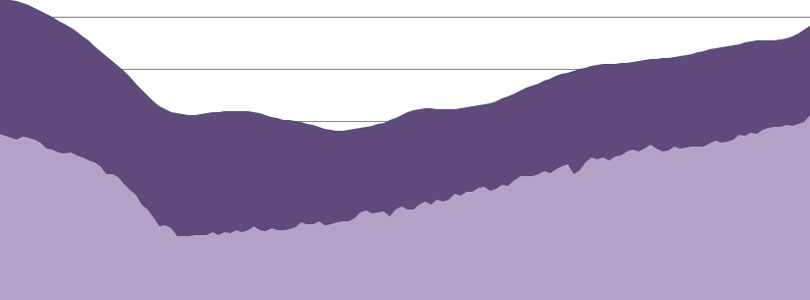June 2018 Employment: Still Positive We’re Working
Bureau of Labor Statistics (BLS) employment data for the state of Rhode Island continues to improve. The number of Rhode Islanders reporting that they are employed increased 1,678 from May, and the number who say that they are either working or looking for work increased 897. Because the first number is bigger, the official unemployment rate fell one-tenth of a percent, to 4.3%.
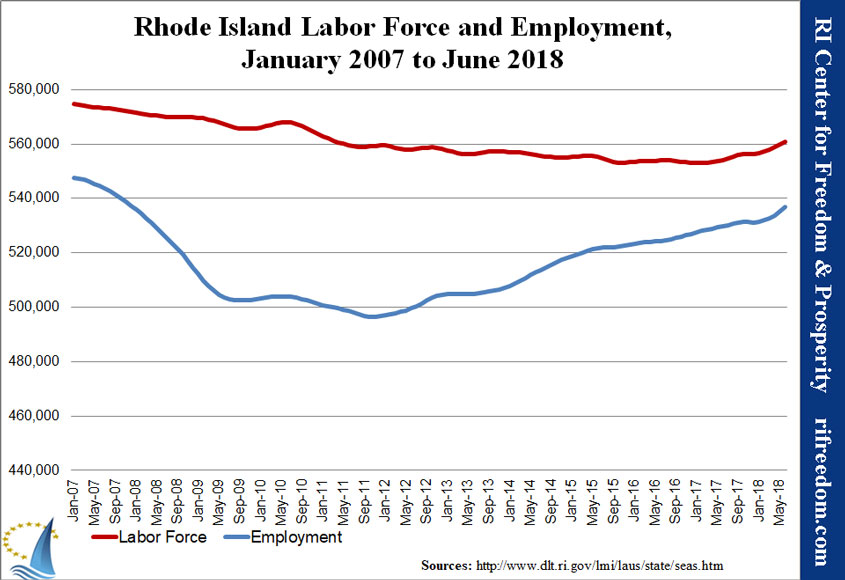
Employment’s increase being so much larger than the labor force increase also meant the unemployment rate would have dropped even more if it were measured against the size of the labor force at its peak, in January 2007. Unemployment would now be 6.6% if nobody had stopped exited the labor force, down from 6.9% in May.
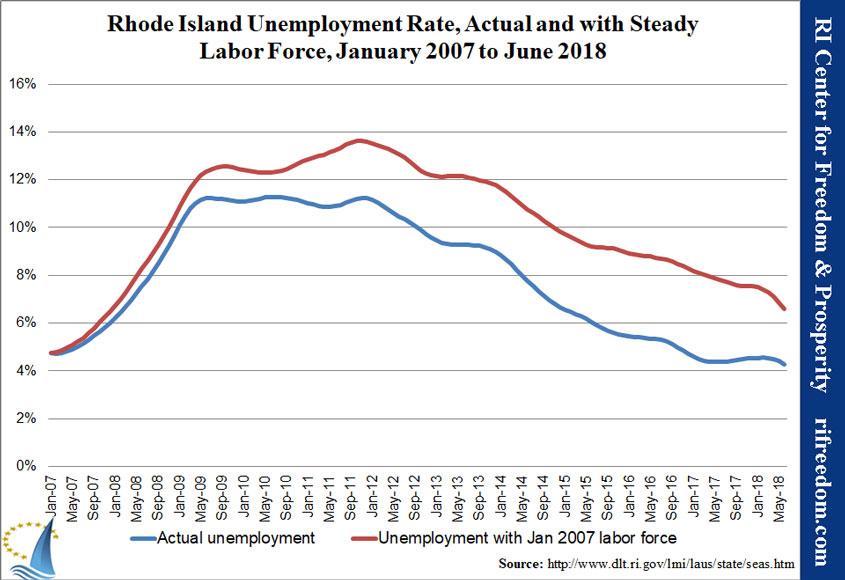
The Ocean States neighbors continue to present a mixed image. Although Massachusetts employment and labor force are on fire, Connecticut is losing steam (although the Nutmeg State is still above its pre-recession peak and well above Rhode Island’s level).
[box type=”tick” style=”rounded”]Please consider a voluntary, tax-deductible subscription to keep the Current growing and free.[/box]
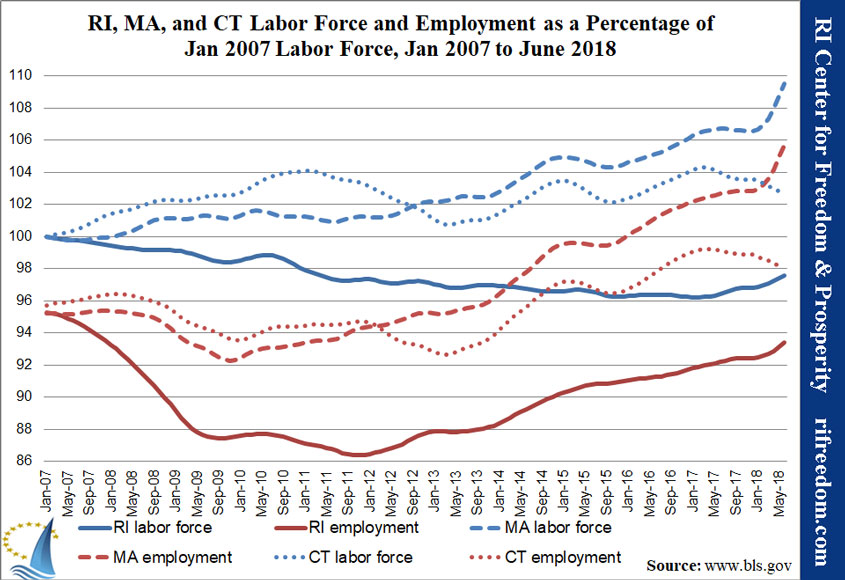
The performance of Rhode Island’s more-successful neighbor has Massachusetts now in the top 10 of states for recovering lost employment, while Rhode Island languishes in the bottom 5. That’s still below peak employment.
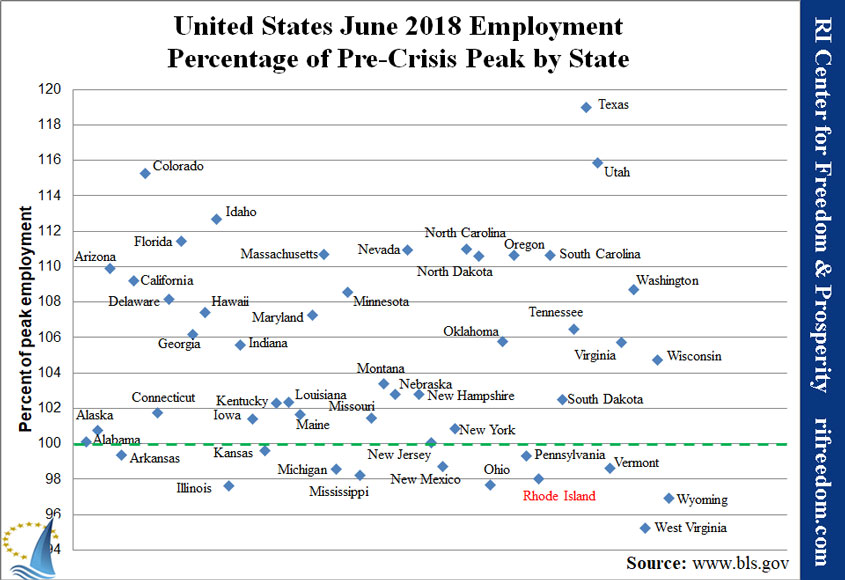
Rhode Island also added 2,500 jobs based in the state (whether or not Rhode Islanders are employed in them). This improvement in the light area of the following chart, however, does not make up for the slowed growth of the last few years.
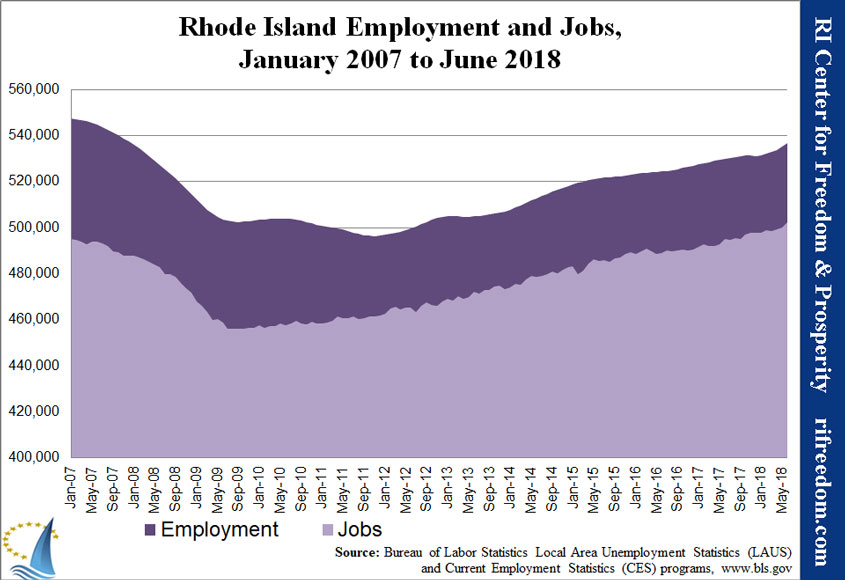
The last chart for this monthly report shows New England states’ positions on the Rhode Island Center for Freedom & Prosperity’s Jobs & Opportunity Index (JOI). JOI takes into account 12 data points, including these employment and jobs numbers as well as income, taxes, and welfare, and it finds Rhode Island to be 47th in the country.
In contrast to employment, labor force, and jobs, Rhode Island saw an increase in dependence on Medicaid, which is not a positive development. Worse, Rhode Islander’s personal income fell $307 million (annualized), making the Ocean State one of only four states to have a negative number on this measure. At the same time, state and local taxes went up nonetheless, by $53 million. As a side note, the federal government is still footnoting its SNAP (food stamp) releases to point out that Rhode Island hasn’t been able to update its numbers for that welfare program since January 2017 thanks to failures of the Unified Health Infrastructure Project (UHIP).
Also noteworthy in the following chart, by the way, is that Utah has overtaken New Hampshire as the second-highest-ranking state, pushing New England’s leader farther from the top spot.
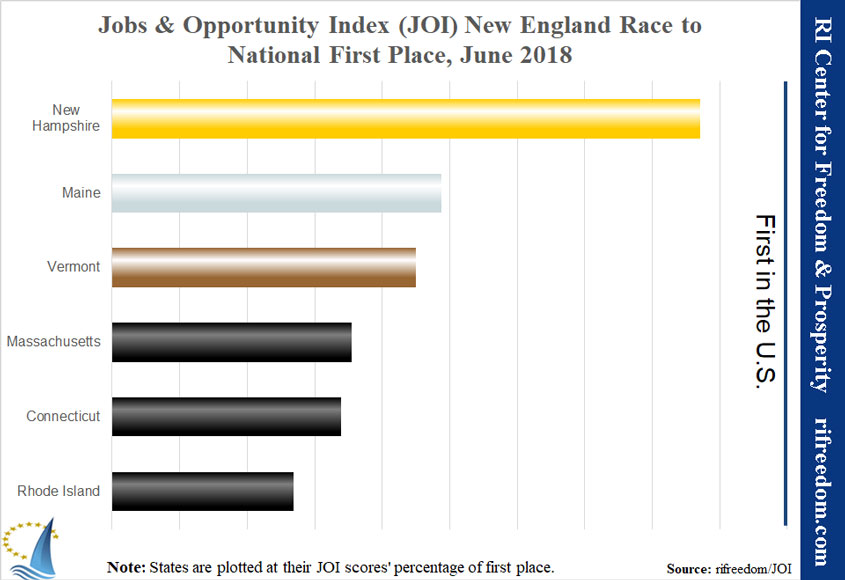
[metaslider id=32396]

